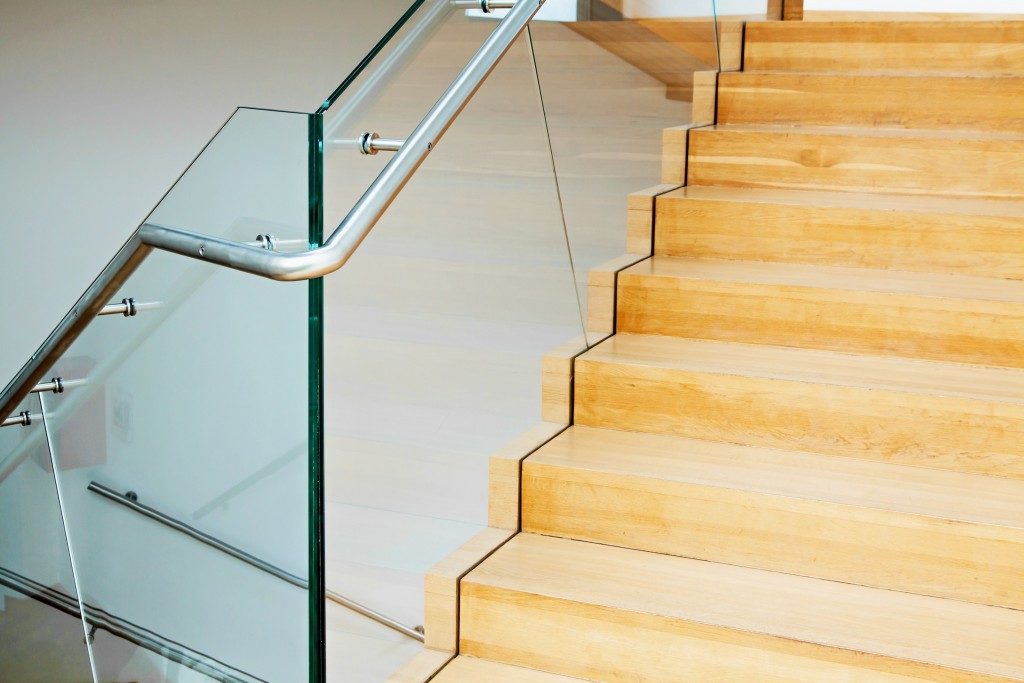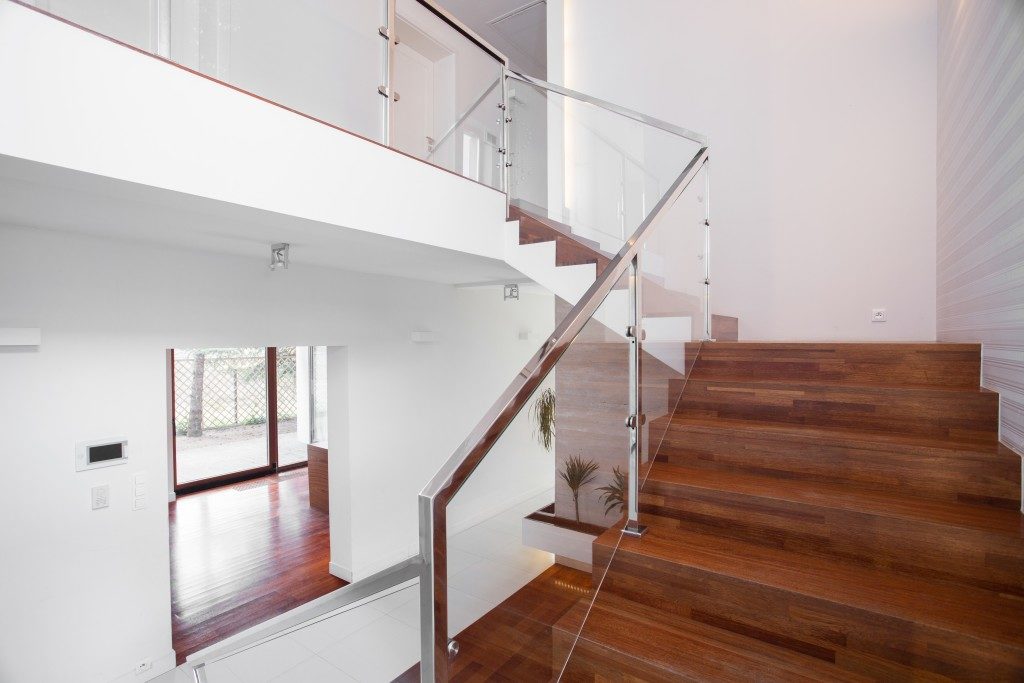Staircases do not only provide vertical circulation to a building, but they also contribute to the overall mood and personality of the entire space. There are several factors to consider when choosing between a variety of commercial staircase designs for a building. This includes floor space, functionality, and aesthetic quality. Here, we talk about the different commercial staircase designs.
Straight Staircases
Because of their simplicity and functionality, straight flight stairs are the most common and oldest type of staircase for many buildings. They are easy to build and maintain, and they are the easiest way to go up and down a building.
Generally, straight staircases have a single, continuing flight of stairs. The National Construction Code (NCC) requires a maximum of 18 stairs in a single flight. A flight of stairs can be connected using landing parts, and these landings can be distinguished into three styles: straight landing, quarter landing, and half landing. The stairs must also slope at a recommended angle of between 30 and 38 degrees. With proper planning and materials, a simple straight staircase can be easily renovated or modified to an elegant yet minimalist staircase.
Spiral Staircases
Large spiral staircases are a hit among many commercial buildings because they are usually very robust and safe. They follow a helical arc, turning at a full 360 degrees and resembling a circle with the treads rising straight around a central pole. Like most stairways and stairway landings, Australian standards require that this type of stairway be provided with a handrail.
A study shows that they promote continual travel and speed compared to straight stairways. But these staircases are built more with aesthetic appeal in mind rather than functionality. In the olden days, they were very useful in small, tight spaces because they do not occupy the same amount of space as regular stairways, thus creating more space for the rest of the commercial floor.
Winder Staircases

Similar to that of spiral staircases, winder stairs are also curved, but the steps turn at only 90 to 180 degrees, without including a landing. They also promote seamless transition by meandering round corners. They are inherently an accessible and safe staircase design. Architecturally, these staircases need meticulous measurements to ensure that the entire flight does not look inclined. There are two styles of winder stairs: a single winder that turns at 90 degrees and a double winder that turns at 180 degrees.
Arched or Curved Staircases
These staircases are usually constructed for their dramatic look, with curved handrails that wrap around the sides to further enhance the look. Arched staircases generally require a large commercial space. They are an eye-catching and impressive investment in an entryway. They are also used as an effective focal point of an interior to draw visitors to the next floor level. Due to their flexibility, these staircases are found in a variety of settings, including hotels and retail spaces.
Stairs are very important because they can enhance or completely ruin the aesthetic appeal of a commercial space. Aside from aesthetics, a lot of other factors, including utility and functionality, must be taken into consideration before deciding which staircase is best for the building.

